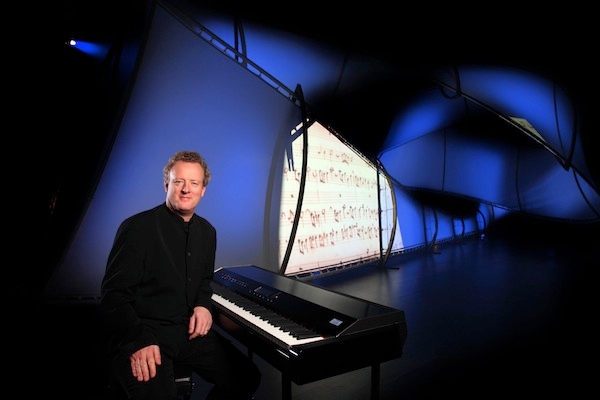Let’s not beat about the bush: Howard Goodall’s Story of Music (BBC2, Saturday) is landmark television, a documentary series that deserves to rank with such unimpeachable classics as Kenneth Clark’s Civilisation and which, if you haven’t seen it yet, you absolutely must for it will answer so many of the questions that have been bugging you all your life. Questions like: ‘Bach — was he really as good as I think he was?’ ‘So what did music sound like in Roman times?’ and ‘Where did Lurpak butter get its name?’
Of course that last one is a fake question. I’d hazard a fortune you’ve never once asked it — but the answer’s interesting all the same. It’s named after a distinctive blowing horn, developed during the Bronze Age but used by Vikings until at least the Middle Ages. In 1797, six pairs of them dating from 800 to 700 BC were found in a peat bog in Denmark, so perfectly preserved that they were still playable. Next time you look at the Lurpak packaging you’ll see something you’ve probably never noticed before: a pair of lurs curling either side of the brand name.
Now if Goodall’s Story of Music were another of those stereotypical TV documentary series of the kind I demolished in my last column, we would have seen the presenter tripping off to Denmark to have a go at playing one himself — with hilariously comical results. Nearby would be standing re-enactors wearing furs and horned helmets (or whatever it was they wore in Scandinavia in 800 BC). Then, of course, there’d be the lur-playing expert on hand to explain why the lur was such a versatile and underrated instrument. He would then go on to demonstrate to a highly impressed Goodall just how marvellous a lur can sound in the hands of a lur master.
To the production’s enormous credit, none of this happened. You knew you were in safe hands when, within the first five minutes of the first episode, the production team had ducked the opportunity to send Goodall not only to the peat bogs of Denmark but also to the sites of ancient Egypt and to the Chauvet caves in France. Instead, Goodall simply stood in a studio while the footage was relayed on a screen behind him. As if it were an illustrated lecture.
An illustrated lecture: imagine! When was the last time telly dared do one of those? Probably not much more recently than Kenneth Clark’s Civilisation series, I’d guess. And while this isn’t an argument for all TV documentaries to ape the stiffness and glacial pace of late Sixties TV, it definitely does come as a huge breath of fresh air. How nice, for a change, to see a documentary series prepared to trust its presenter as an authority in his own right rather than forcing him to jump through hoops in order a) to show how wackily entertaining he is and b) how many diverse experts he has consulted on his ‘journey’ of discovery.
I blame two things for the terrible direction in which TV has travelled since. First, dumbing down and the received idea, now tested to destruction on programmes like the BBC’s sublimely awful new series The Genius of Invention, that modern adults are quite incapable of watching anything factual unless it’s explained to them by Blue Peter-ish presenters falling over themselves to demonstrate how thrilling and relevant and HEY WOW! it all is.
Secondly, cultural relativism. It’s everywhere, of course, but one of the areas it’s most deeply entrenched is in the Gramsciite redoubts of TV-land. The notion that anyone — white males, especially — could be remotely qualified or trusted to disseminate a particular narrative is sheer anathema to the kind of cult studies and literary theory graduates who dominate the BBC’s higher echelons. ‘Whose authority?’ they’d ask. (As Neil MacGregor of the British Museum once asked me — making me love him not quite as much as I used to but then I suppose he can’t be blamed. In that particular milieu, they’re all at it.)
Anyway, back to the Story of Music and why it’s so good. What it boils down to, of course, is Goodall. He’s just brilliant: puckishly amused, witty, sprightly — but not so desperate for your attention that he’s going to whore himself or cheapen what he has to say with whispery, heartfelt emoting or gurning tomfoolery. He has a view; he takes a line; he illustrates it — often performing the examples himself on piano or as a conductor with an orchestra; or, if not, by using pop videos or filmed concert renditions; and your job as viewer is simply to sit there attentively (for there are no recaps) being enlightened, delighted, educated.
It’s old school. It’s a joy. I can’t recommend it highly enough.







Comments